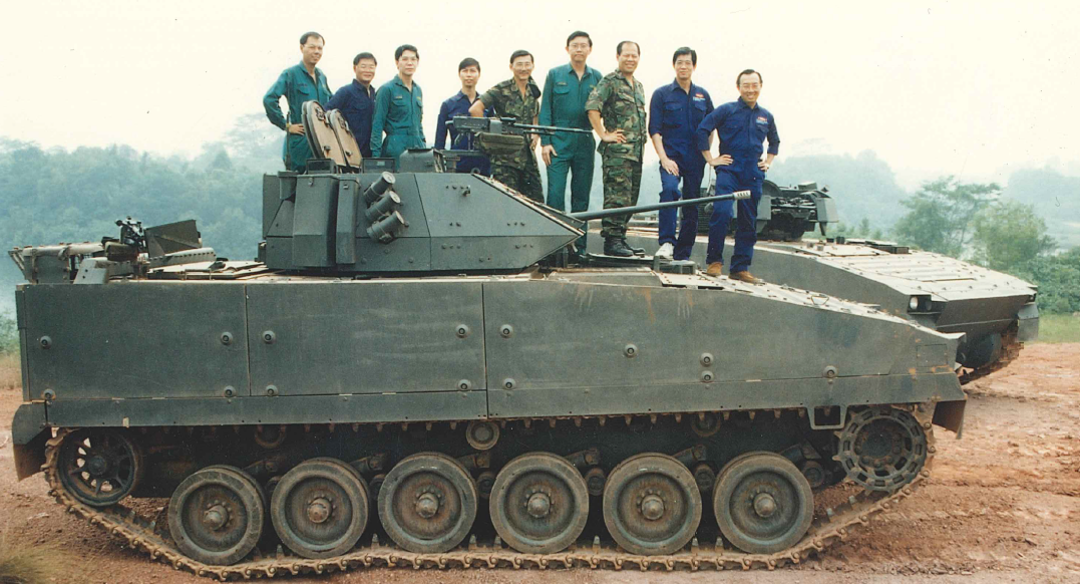
Bionix to Hunter – the Evolution of a Singapore-Made Armoured Fighting Vehicle
The Hunter AFV is a testament of Singapore’s heritage in defence engineering capabilities, one that began more than a decade ago with a bold vision – to develop a land combat vehicle that offers the same level of situational awareness as the cockpit of a fighter jet.
Being a locally developed armoured fighting vehicles (AFVs) by ST Engineering, the Hunter AFV is the latest of a lineage made in Singapore which includes the Bionix, Bronco and Terrex and several variants of these models. There was no such class of armoured vehicle at that time that the team could benchmark against. All it was armed with was that singular vision to work toward. And the rest was entirely up to their ingenuity.
The decision to build a fully indigenous AFV by a multidisciplinary project team comprising Army officers, engineers from the Defence Science and Technology Agency (DSTA) and ST Engineering, was first hatched in the late 1980s, to build up the capability of the local defence industry.

Thus was born the Bionix – a collaboration between the SAF, DSTA and ST Engineering, which saw the first vehicle roll off the assembly line in 1997 before becoming fully operationalised in 1999.
Fast forward a decade to 2010, and ST Engineering added a feather to its cap when it delivered the first Asian-built armoured vehicle for a Western army. The Warthog, which was a modified version of the all-terrain 20-tonne Bronco was deployed in Afghanistan by British forces. With improved designs to strengthening the protective armour in withstanding rocket propelled grenades and Improvised Explosive Device (IED) blasts, the Warthog provided enhanced survivability to the crew with bigger and stronger vehicles.
A quantum leap in the design of the Hunter AFV is in the area of communications which has been enhanced with a system architecture that is not just modular to enable easier upgrades but also fully integrates both hardware and software systems. With the added Army Tactical Engagement and Information System (ARTEMIS) deployed in the Hunter AFV, the system enables better connectivity of the weapon and communication control subsystems, as well as the capabilities to link up with other vehicles for enhanced battlefield command.
In line with design guidelines from the DSTA, the Hunter AFV is also designed for growth, through an open and modular electronic architecture to facilitate future tech insertions.
One of the many new technologies featured in the Hunter AFV is the use of CAD/CAM (computer-aided design and manufacturing), which was first adopted for the Bionix, was used for the development of subsequent vehicles.

The new Drive-by-Wire technology offers flexibility for both the driver and commander where they can switch roles without leaving their seats. This technology could also pave the way for unmanned and autonomous military vehicles in the future.
With the paradigm shift in the design of consoles and screens, the Hunter AFV has also adopted a more intuitive control system with visual screens, suited for the modern soldiers today.
The Hunter AFV is equipped with all-around cameras which now provides a better situation awareness among the crew members, enabling better coordination during combat engagements in picking their targets as well as transmissions of locations to prevent friendly fire.
With the enhanced 360 camera surveillance, the Hunter AFV enables a closed-hatch operation where the crew can view surroundings onscreen with the all camera system without the need for the vehicle commander to look out of the turret and be exposed to sniper fire, which is one of the useful lessons from the Bronco deployment in Afghanistan.
Find out more about the Hunter AFV.
Find out more about the roles of our SME partners in the Hunter programme.

Subscribe to our newsletter
Copyright © 2025 ST Engineering
By subscribing to the mailing list, you confirm that you have read and agree with the Terms of Use and Personal Data Policy.

